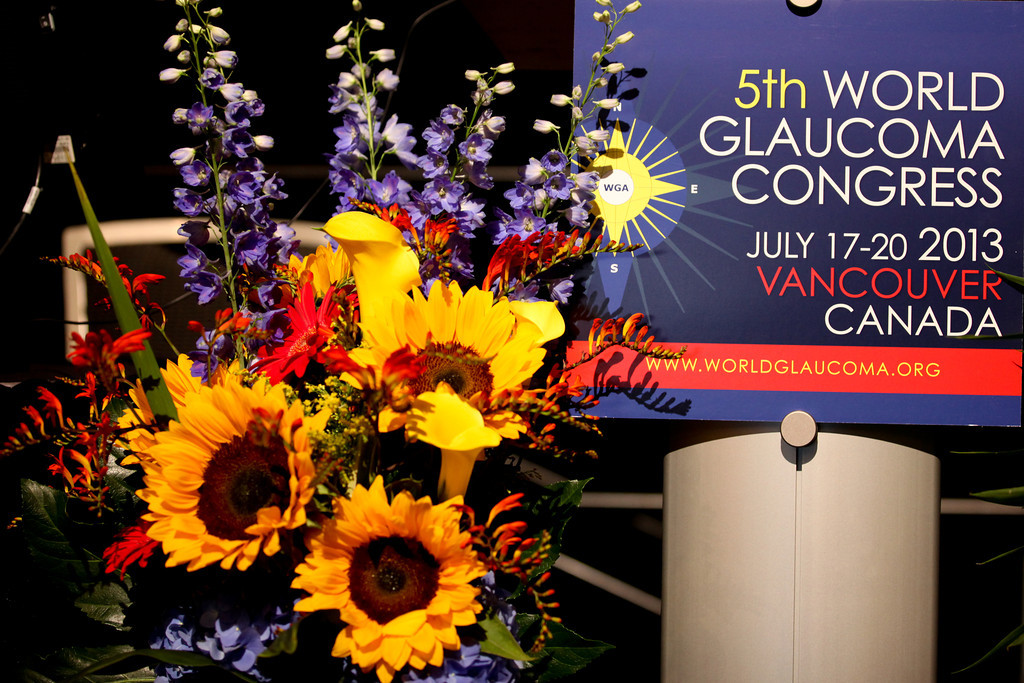Update from the World Glaucoma Congress
Enewsletter – 24 October 2013
I recently attended the World Glaucoma Congress in Vancouver. It was a thought provoking and stimulating conference that ran over 3 days with lots of pointy hatted people discussing the finer points of glaucoma as well as introducing new surgical procedures.
Highlights of the conference included a keynote lecture from Professor Stephen Drance, the man we all know who gave the name to peri papillary haemorrhage that are now affectionately known as drance haemorrhages. Professor Drance is now 88 years of age and although the years may have taken a toll on his body, it has certainly not affected the sharpness of his mind. Professor Drance essentially gave us a tour of his experience of working in ophthalmology from the late 1950s right up until the present day where he is still active in the ophthalmic community.

Other highlights of the congress revolved around new surgical procedures where excitement is building towards operations that are essentially blebless procedures. As you would all know, a trabeculectomy bleb is the bane of a glaucoma procedure as there is the potential for long term issues including blebitis as well as bleb dysesthesia. Micro incisional glaucoma surgery is on the cusp of being a commercial and surgical reality as well as other procedures such as supra choroidal stents and intra canalicular bypass stents.
From my own perspective I have investigated this rather robustly and feel that this is going to be the next stage for patients who have mild to moderate glaucoma and particularly those who have glaucoma undergoing cataract surgery. It is a relatively straight forward procedure that should only take several minutes and essentially resume relatively normal function of the natural drainage system that exists within the eye which has largely failed in glaucomatous patients. I anticipate this procedure rather keenly and hopefully we will be able to perform the operation once TGA approval is given to the iStent towards the end of the year.
Glaucoma still tends to confound most ophthalmologists though our treatment paradigms really revolve around trend analysis rather than event analysis, that is, looking for rates of progression for those who have already been diagnosed with glaucomatous disease. Topical treatments are evolving with the introduction of preservative free prostaglandins as well as new potential drugs that are currently in the final faze of clinical trials.
Selective laser trabeculoplasty was also keenly discussed through multiple forums and although there is still some controversy surrounding the role of selective laser trabeculoplasty it is becoming very clear that this is a good alternative both as a primary treatment and also for those patients that are intolerant to topical therapies.
I did attend several of the congress discussions in regards to advanced and complicated glaucoma surgery and I was rather reassured to find that surgery that we are peforming in the local area certainly comes up to world standards sand the results I have been achieving, particularly in recent times with the express shunt, are second to no one in the current published literature.
All in all, it was a stimulating and exciting event highlighted by a dinner at Vancouver Aquarium where we were able to meet a pod of beluga whales and certainly capped off by an excellent venue in a most welcoming country. I plan to keep you updated on events further down the track and remind everyone that the Glaucoma Initial Treatment Study remains in recruitment and we are still trying to achieve our target of 400 cases by mid next year.
Dedicated to providing premium eye care.
Learn more about our range of services available to help you see into the future.